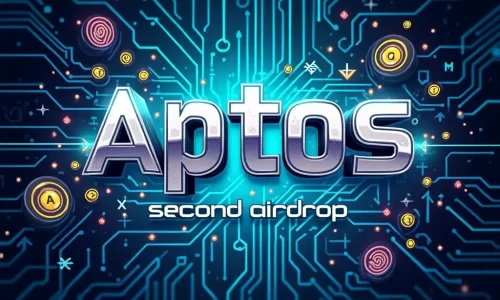The cryptocurrency world is constantly evolving, and one trend that has gained significant attention recently is the concept of retroactive airdrops, commonly referred to as RetroDrops. Unlike traditional airdrops, where tokens are distributed to users as part of a promotional event or project launch, RetroDrops reward early supporters or participants of a platform after its success or expansion. This model has become particularly popular in decentralized finance (DeFi) and blockchain projects as a way to incentivize loyal users who helped build the ecosystem.
What Are RetroDrops?
RetroDrops, or retroactive airdrops, are tokens distributed to users who have interacted with a platform or protocol before a specific point in time. These users are usually rewarded based on their activity, contributions, or engagement within the ecosystem. The idea is to recognize and reward those who took an early risk or were part of a project before it gained mass adoption or value.
This concept shifts the narrative from speculative investments to meaningful participation, fostering a sense of community and fairness. By rewarding early adopters, projects build stronger ties with their user base, encouraging long-term loyalty and engagement.
Arbitrum: A Notable Example of a RetroDrop
One of the most talked-about RetroDrops in recent history was Arbitrum’s token distribution. Arbitrum, a layer 2 scaling solution for Ethereum, launched its native token ARB in early 2023. Rather than conducting a typical ICO or token sale, Arbitrum rewarded early users of its platform through a massive RetroDrop.
Arbitrum’s RetroDrop targeted users who had interacted with the Arbitrum network before a specific date. The distribution was based on several criteria, including the number of transactions and the total amount of assets bridged to the Arbitrum ecosystem. The drop was highly anticipated, and those who qualified saw significant returns in the form of ARB tokens. This move not only rewarded early supporters but also helped solidify Arbitrum’s position in the blockchain ecosystem by creating strong incentives for future engagement.
Other RetroDrops to Watch
Arbitrum isn’t the only platform embracing RetroDrops. Several other projects have employed this strategy, often creating waves in the crypto community.
- Optimism (OP): Like Arbitrum, Optimism, another Ethereum layer 2 solution, also conducted a RetroDrop for its early users. Those who interacted with the Optimism network before the airdrop’s announcement were rewarded with OP tokens. Optimism’s goal was to create a more decentralized ecosystem and ensure that the governance of the protocol was placed in the hands of its most active and early supporters.
- Uniswap (UNI): One of the earliest and most famous RetroDrops came from Uniswap, a decentralized exchange on Ethereum. In 2020, Uniswap rewarded its early users with its native UNI token. Anyone who had used the platform before a specific cut-off date received a generous amount of UNI, creating a wave of excitement in the DeFi community.
- DYDX (DYDX): Decentralized exchange protocol DYDX also rewarded early traders with its governance token, $DYDX. The airdrop was targeted at users who had traded on the platform before a certain date, with rewards proportionate to their trading volume and activity.
Why RetroDrops Matter
RetroDrops are more than just a marketing tool; they represent a shift in how crypto projects engage with their communities. By rewarding early users, platforms incentivize organic growth and meaningful contributions rather than speculative interest. This creates a healthier, more sustainable ecosystem where users feel valued and projects can grow steadily without relying on hype.
Furthermore, RetroDrops contribute to decentralization. By distributing governance tokens to early users, projects ensure that decision-making power lies with those who have actively participated in building and supporting the platform from the beginning.
How to Position Yourself for Future RetroDrops
Many crypto enthusiasts are now looking for ways to position themselves for future RetroDrops. Here are a few strategies that can help:
- Engage Early: The key to benefiting from RetroDrops is to become an early user of promising platforms. Watch for new blockchain protocols, DeFi projects, or decentralized apps (dApps) that are gaining traction. The earlier you get involved, the higher your chances of qualifying for a RetroDrop.
- Use the Platform: Many RetroDrops reward users based on their activity. Interact with the platform regularly, make transactions, provide liquidity, or stake tokens. The more you contribute to the ecosystem, the better your chances of receiving rewards.
- Stay Informed: Keep an eye on the crypto space for announcements and updates. Many projects won’t reveal their plans for RetroDrops until the last moment, so staying informed through forums, social media, and project communities is crucial.
- Diversify Your Participation: Don’t rely on just one project. Spread your activity across multiple platforms, especially those that have promising technology or a growing user base. This increases your chances of being eligible for future RetroDrops from various projects.
Conclusion
RetroDrops have become a powerful way for blockchain projects to reward their most valuable users. By recognizing early adopters and active participants, projects like Arbitrum, Optimism, Uniswap, and DYDX are creating long-lasting loyalty and decentralized governance. For crypto enthusiasts, RetroDrops represent a unique opportunity to be part of the future of blockchain technology while reaping tangible rewards.
As this trend continues to grow, staying engaged and active in emerging platforms could unlock significant potential for those ready to participate. The future of RetroDrops is bright, and it’s likely we’ll see even more innovative ways for projects to reward their communities in the years to come.




